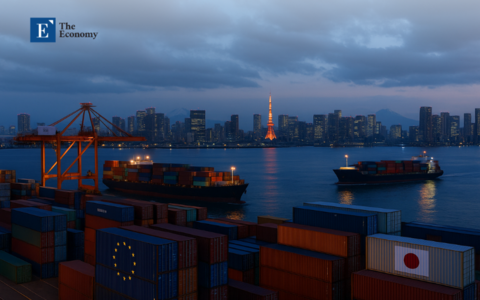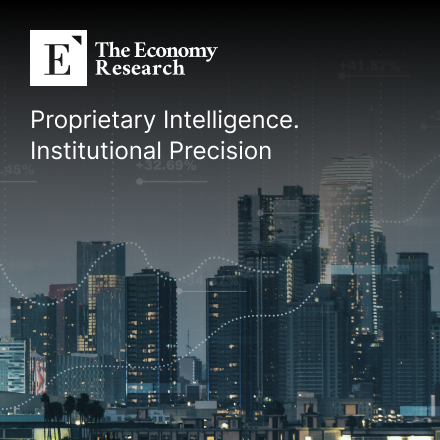Input
Changed
As China transitions from a low-cost manufacturer to a direct rival in high-value sectors, tariffs are not merely political maneuvers but economic counterweights designed to manage industrial parity. The tools to understand this shift are not rhetorical but statistical.
The traditional narrative of the US–China trade war often hinges on ideology, nationalism, or strategic decoupling. Yet at its core lies a more tangible and economically grounded transformation: China is no longer the workshop of the world—it’s now a full-spectrum industrial competitor. This evolution is measurable, visible in shifting trade structures, and quantifiable through the Export Similarity Index (ESI) and the Partner Similarity Index (PSI) introduced by the Centre for Economic Policy Research (CEPR).
These indices reveal that China’s export profile now resembles — not complements — that of the U.S., Japan, and the EU. It no longer produces what others don’t; it produces what others do, often at equal or superior value.
Measuring Rivalry: The Rise of Trade Similarity
The CEPR article introduces a framework for mapping global trade convergence:
- Export Similarity Index (ESI): A tool measuring how closely the export baskets of two countries align. A high ESI signals direct competition in shared markets.
- Partner Similarity Index (PSI): This shows how much a country’s exports meet another’s import needs. A falling PSI between China and Western nations indicates diminishing complementarity and rising redundancy.
Between 2010 and 2023, China’s ESI with the euro area surged by nearly 10 percentage points, particularly in vehicles and precision machinery. With Japan, the rise was steady but slower. The U.S.–China ESI remained flat until 2020 — then spiked as China entered sectors once dominated by American firms, including electrical machinery, computing equipment, and green technologies.
Meanwhile, PSI figures suggest that China imports less of what the West produces. According to CEPR estimates and trade data cross-verified with WTO databases, its import share of road vehicles dropped from 4.5% in 2013–2017 to just 2.7% in 2023. This isn’t decoupling. It’s substitution.
From Complement to Competitor: China’s Policy-Led Transformation
What caused this shift? The answer lies in China’s strategic industrial policies. Since the early 2010s, Beijing has prioritized technological self-sufficiency in semiconductors, EVs, aerospace, and artificial intelligence.
Rather than importing high-tech components, China scaled domestic R&D and vertical integration. Between 2015 and 2022, China’s gross domestic R&D expenditure grew by over 70%, and the share of high-tech exports in its total exports rose from 29% to 36% (World Bank data, 2023).
China isn’t just catching up — it’s aligning structurally with the West, producing similar goods at competitive quality and cost. This is trade convergence in action.
Rethinking Tariffs: A Rational Economic Response
In this context, tariffs appear in a new light. Critics often argue that tariffs are economically inefficient and globally harmful political theater. But when your competitor now exports the same high-value goods, a tariff is not a blunt tool — it’s a sector-specific shield.
The 2018–2020 U.S. tariffs were criticized for hurting consumers and disrupting supply chains. However, data from the International Studies Quarterly (2024) reveals that these tariffs suppressed Chinese export volume in advanced sectors by 8–12%, and delayed planned expansions in renewable technology and industrial electronics. The same data shows slowed R&D growth in export-oriented firms.
In short, tariffs bought time. This is when U.S. firms in vulnerable sectors may have used to invest, innovate, and regain footing.
The "Walled Garden": Strategic Breathing Room or Economic Self-Harm?
The term "walled garden" is often used pejoratively — suggesting that U.S. industrial policy is sliding toward isolationism. But what if the garden is a greenhouse, not a prison?
A temporary slowdown in global integration may offer strategic breathing room. Sectors like artificial intelligence, chip manufacturing, and quantum computing demand stable, domestic ecosystems — not fragile dependencies. Meanwhile, China's internal pivot toward consumption and new partnerships indicates that global trade isn’t collapsing but restructuring.
As noted in the East Asia Forum, the U.S. risks building a world of its own — but that world may be a calculated buffer, not an accidental detour.
Tariffs as Signals in a New Trade Order
The CEPR's trade convergence indices show us the future: China is no longer just producing cheaper. It’s making the same. And that changes everything.
Trade theory assumes comparative advantage. But what happens when that advantage disappears? The U.S. and China now occupy overlapping industrial spaces. If trade policy doesn't adapt, the loss won’t be ideological — it will be technological and economic.
Selectively and strategically applied tariffs can become adaptation tools — not punishment. They mark a shift from defending against low-cost goods to managing parity in high-value industries.
In this new era, trade policy should not be about protectionism or openness alone. It should be about alignment: between economic reality, industrial strategy, and global competitiveness.
And that begins with understanding — when the data speaks, we must listen.





















